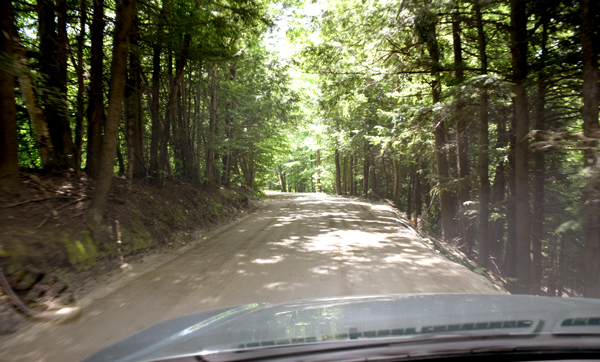The number of cars using Rolston Road to get around the Route 100 road closure as the Lareau bridge is being replaced is triple what it was before the road was closed.
Rolston Road is a class 4 road that is too narrow for two cars to pass in several sections. The road runs from Route 100 to the East Warren Road. At its steepest points, it is bounded by a deep ravine on the south and trees and rock faces on the north.
A tracker, installed before Route 100 was closed on June 19, revealed that the week of June 6 through 12, there was an average of 220 cars a day on the road, 118 going down and 102 going up.
The first week of the road closure, June 20 through 26, there was an average of 665 cars per day, 303 going down and 362 going up. The busiest day of that week was June 24 with 797 cars per day, 345 going down and 452 going up.
In 2010, the average number of cars per day from May 31 through June 6 was 188.
The speed limit on Rolston Road is 25 mph for the first 0.83 mile, after that it is 35 mph out to the East Warren Road.
Of the 140 drivers coming down from east to west on June 15, before the closure, five were driving 1 to 15 mph, 14 drove 16 to 20 mph, 51 drove 21 to 25 mph, 51 were driving 26 to 30 mph, 22 were driving 31 to 35 mph, two drove 36 to 40 mph and one drove 41 to 45 mph.
Of the 370 drivers driving westbound after the road closed, eight drove 1 to 15 mph, 50 drove 16 to 20 mph, 129 drove 21 to 25 mph, 132 drove 26 to 30 mph, 44 drove 31 to 35 mph, five drove 36 to 40 mph. No one drove faster than 40 mph.
Drivers headed east up the hill followed similar patterns. Before the road was closed 109 of the 145 drivers were traveling between 21 to 30 mph. Sixteen drivers drove 31 to 35 mph, seven drove 36 to 40 mph, nine drove 16 to 20 mph and four drove 1 to 15 mph.
After the closure, 337 of the 415 drivers on June 22 were traveling between 21 to 35 mph. Thirty-eight cars were traveling between 1 to 20 mph and five drove 36 to 40 mph. One car drove 41 to 45 mph.
On the narrowest sections of the road where two cars can’t pass, there are small, short pull-off areas where one driver can pull in and let the other driver by. That makes policing the road more difficult since police cars parked in the pullouts will restrict the ability of traffic to get by.
The problem is short-lived, however, as Route 100 is scheduled to be reopened on July 31.







